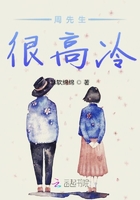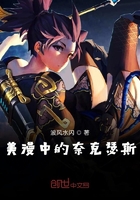Gachet‘s enthusiasm for these paintings was something new and encouraging for Vincent, whose previous portraits had been mostly of uneducated people. With Gachet, a man whose house was crammed with Cezannes, Monets, Pissarro’s works given him in exchange for edictal consultations-he had for the first time a model he could talk to about his painting.
“Working like one possessed.” Vincent completed 36 paintings in the 71 days he spent in Auvers, plus innumerable drawings. He painted in many moods, from serenity to near hysteria. He painted flowering blossoms with the tight precision of a Japanese print. He painted troubling landscapes in which everything seems a little askew. He painted the featureless little town hall of Auvers, all spread about with tricolored flags and bunting for Bastille Day, and made it look positively jolly. He painted the quiet old parish church and filled it with a volcanic force. He painted Dr. Gachets 19-year-old daughter, Marguerite, in a shimmering white dress, at her piano. he painted old thatched cottages that reminded him of his early days in the Netherlands; he painted poppies, chestnut trees, gardens, golden wheatfields.
His spirits picked up. “I feel completely calm and in normal condition,” he wrote his mother. “The doctor here says I should throw myself entirely into my work and in this way find distraction. Besides, since I gave up drinking, I do better work than before, and that much at least is gained.” He began to make plans for the future. He would rent a house in Auvers In January 1890 Theo and Jo had a baby whom they named Vineent. They brought the infant to visit his uncle, who had a great time showing him the farm animals and finding him a bird‘s nest. “Since you were good enough to call him after me,” he afterward wrote Theo, “I should like him to have a spirit less unquiet than mine.”
For despite everything, there was no quiet in Auvers. Even the arrival of the adored new nephew was disturbing to Vincent. It reminded him that for years his sole support had been the 50-franc notes Theo kept slipping into the envelope when he wrote him. The brothers always regarded this as an investment that would pay off Theo handsomely when Vincent’s career came to full bloom. But Vincent had only recently sold his first painting, and now there was for Theo the added responsibility of his wife and baby. It tormented Vincent to think that he was being a burden on his brother, who was also insecure and unstable. So a new note crept into his letters to Theo: “Only when I stand painting before my easel do I feel somewhat alive. This is the lot which I accept and which will not change. And the prospect grows darker; I see no happy future at all.”
In a pattern familiar from the onset of his earlier attacks, Vincent became deceptively calm. “I am entirely absorbed,” he wrote his mother in late July, “by that immense plain covered by fields of wheat.” A few days later he produced one of the most tormented and disturbing of all his works, “Crows Over the Wheatfields” The wheatfield is a tangled mass of spasmodic diagonal yellow strokes; the sky is a hectic blue; red and green paths lead into the wilderness of grain but go nowhere. Flying across the whole canvas are black crows, figures of inexorable doom. Describing some of his last landscapes to Theo, Vincent wrote, “I did not need to go out of my way to express sadness and the extreme of loneliness.”
The familiar melancholymelancholy n.忧郁 had him in its grip. He must have sensed that this was no disease of the south; he was doomed to an unending series of recurrences. He was alone, he had lost faith in himself, in everything. In his last letter Vincent wrote Theo:“In my own work I am risking my life, and half my reason has been lost in it.”
He put the letter in his pocket and picked up a revolver he had borrowed from Ravoux. He walked into the fields. pointed the gun at his chest, fired and fell to the ground. Then, finding he was only wounded, he got up and staggered home. When Vincent did not come to dinner, Ravoux went upstairs to find him in bed.“I tried to kill myself but missed.” Vincent said. Dr. Gachet came on the run. He did not dare remove the bullet, but left his patient apparently resting, calmly smoking his pipe. Alerted by the doctor, Theo came the next morning, and the two brothers were together all day. Theo found a moment to write his wife:“Poor Things are sometimes too hard; he feels so alone. If only we could give him a little courage to live!”
But Vincent had given up. “He himself wanted to die.” Theo later wrote to his sister, Elisabeth. “When I tried to convince him we would cure him, he replied, ‘The sorrow will never end.’He was very calm. Among his last words were ‘I wish I could go home now.’And thus it happened. In a few moments he found the peace he had been unable to find on earth.” Vincent died at 1 a. m. on July 29, 1890.
His friend the painter Emile Bernard came to Auvers for the funeral.“Many people arrived,” Bernard wrote later, “mostly artists. There were also people from the neighborhood who loved him, for he was so good and so human. Outside, the sun was frightfully hot. We climbed the hill of Auvers talking of him, of the bold forward thrust he had given to art, of the great projects that always preoccupied him, of the good he had done to each of us. we arrived at the cemetery overlooking the fields ready for reaping, under a wide blue shy he might have loved still. And then he was lowered into the grave.”
Theo was grief-stricken and fell gravely ill. Prior to his death on January 25, 1891, while being nursed in the Netherlands, he was told that his brother had at last had an exhibition, hastily improvised by Emile Bernard. “On this cold Christmas day,” reported an Amsterdam daily, the Algemeen Handelsblad, “some Dutchmen gathered in the tiny rooms of an unoccupied apartment in Montmartre, there to admire some 100 paintings. Their enthusiasm was tempered by sorrow: the artistic treasures were the legacy of an artist who had disappeared too soon.”















